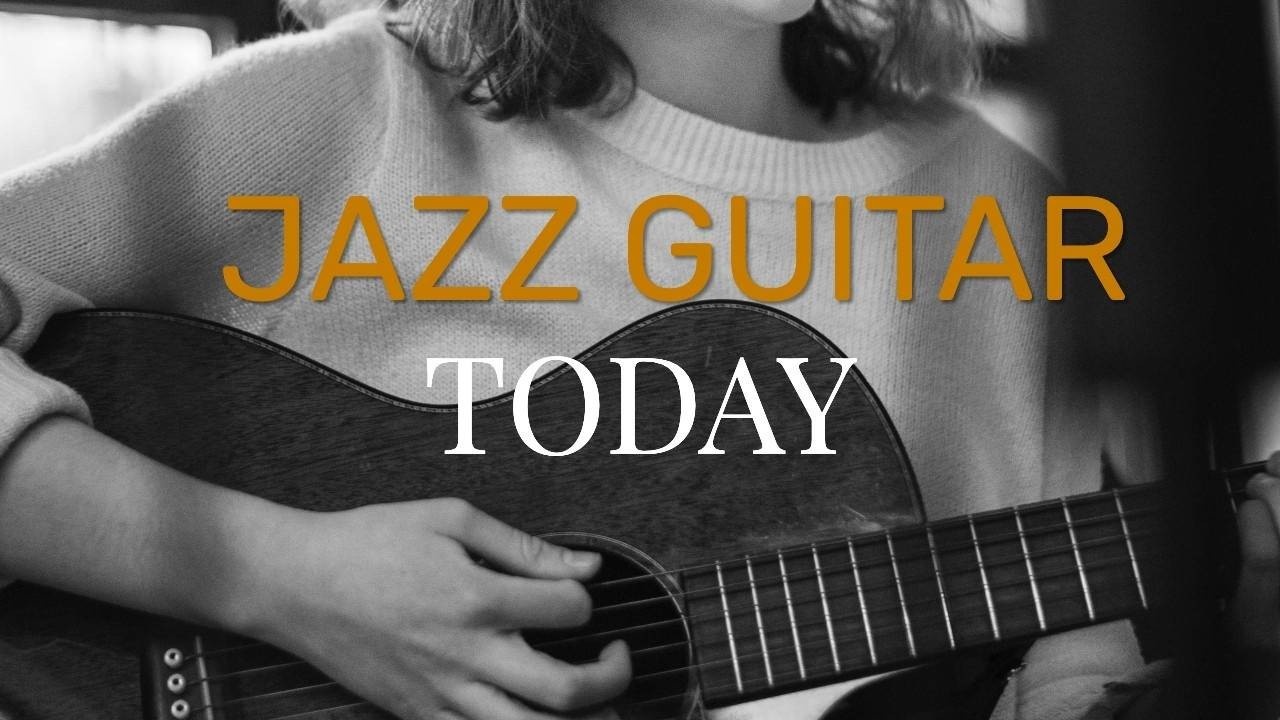
Jazz Guitar Today
Sep 16, 2020A Guest Post by Jonathan Orriols
Many things about jazz guitar have stayed the same. The epicenter of the hottest jazz is still New York City by most accounts, the improvisational qualities of it are the same, many of the traditions are the same.
What has changed?
Well, for starters, the vocabulary - while still based in traditional bebop language - has evolved a great deal. Players draw influence from many forms and styles of music, explore a really dense harmonic palette, mess around with effects more, and so on.
In this article, I will be discussing some of the more modern approaches and the players who I believe to be at the helm of said innovations.
But before we get to that, let's talk about what made jazz guitar what it was in the 50s, 60s, and 70s.
Jazz Guitar of Old
Early jazz guitar would include guys like Freddie Green strumming very steady rhythmic chords accompanying the Count Basie Orchestra.

Early improvisers like Charlie Christian laid the groundwork for generations to come. Later, players like Wes Montgomery carried the torch down to guys like Pat Martino and George Benson.
All of these players' vocabulary was deeply rooted in the bebop tradition of early jazzers like Charlie Parker, Dizzy Gillespie, and others.
Transition to Modern Language
While most players still hold onto the tradition of old school bebop language, it is no secret that the language has evolved a good bit.

Players like to make use of more modern devices and "outside" playing techniques like side-slipping, triad pairs, sophisticated melodic minor applications (and other scales, of course).
Even - or especially - in chord melody and solo guitar style playing, guitarists are really laying into dissonances and fresh colors to create whole other dimensions of sound.
For a great example of this, check out the amazing Peter Bernstein here playing the classic "I Should Care."
Modern Equipment
When it comes to gear, I can't say things are all that different. Sure, there are new amps, new guitars, and more coming out just about every week.
But people in the jazz world still seem to enjoy their arch tops and the same types of amps.
One particular exception I've noticed in this area is effect pedals or stompboxes as some call them.
These days, players like Kurt Rosenwinkel, Gilad Hekselman, and Bill Frisell have really taken a liking to effects pedals. Among these, I've noticed delays, reverbs, volume pedals, and other filters.
Here's a really fantastic rendition of Stella by Starlight by Kurt Rosenwinkel where he makes use of the Electro Harmonix Freeze pedal.
Players of Note
Next, I would like to talk about a few players that exemplify the sounds and ideas I'm discussing here.
This is not a comprehensive list by any means, but I would just like to give you a few players to listen to in consideration of what jazz guitar is and has become today.
Kurt Rosenwinkel - One of the premier jazz guitarists on the world stage today, Rosenwinkel has made a name for himself both as a leader and a sideman with major names such as Gary Burton, Joe Henderson, and others. Today, he's won several awards and is among the greatest jazz guitarists in the world.
Gilad Hekselman - Gilad Hekselman has a very unique voice, is a master of motivic development and manipulating time. You kind of have to be when you're playing alongside someone like Ari Hoenig. His older recordings are more in the swing tradition while his newer ones have adopted a more eclectic approach. Definitely worth checking out if you haven't already!
Peter Bernstein - Bernstein has played with giants like Brad Mehldau and others and is a staple in the world jazz scene. He really is a favorite of mine and if you listened to the video above, you know he's got one of the most unique voices in the game right now. His ability to craft solos on the fly is also something to behold.
Ben Monder - If we are talking about modern, it doesn't really get more modern than Mr. Ben Monder. What an original voice! He is also well-known for being a teacher and clinician and I would really recommend picking up some of his teaching materials.
Tim Miller - Another one of my favorite guitarists. Tim Miller has a very unique approach to harmony and solo playing and he is instantly recognizable. Drawing from influences like Allan Holdsworth, Michael Brecker, Wayne Shorter, and others, it's easy to see why he is such a big name on the scene today.
John Stowell - Another fantastic modern jazz guitarist with an incredible harmonic sense and an almost zen-like quality to his playing. John is known for his applications of melodic minor, harmonic major, and other scales and modes to reharmonize classic tunes as well as his own originals.
Conclusion
If you observe some of the traits of modern jazz guitar listed here, you'll probably notice more than one in each of the players mentioned.
What I find really exciting is the fact that we have more resources than ever. Any kid in any corner of the world with internet access and a guitar can learn remotely and push the envelope even further.
I'm pretty happy about where we are and where we seemed to be headed in jazz guitar. How about you?
**Notes from the editor** This post was updated 09/16/2020.
A Guest Post by Jonathan Orriols
Jonathan Orriols is a guitar player out of Miami, Florida with 20 years of experience. He writes and performs music in several groups spanning different genres such as jazz, blues, and rock. He also studied composition for film, tv, and games through Berklee’s online program.









